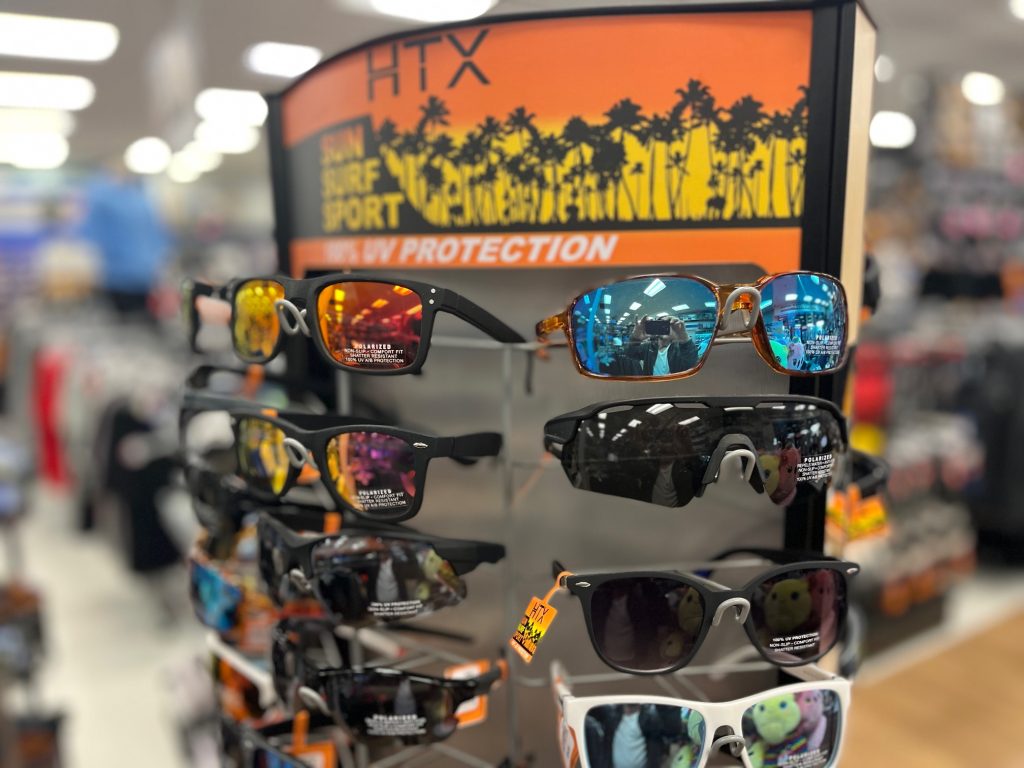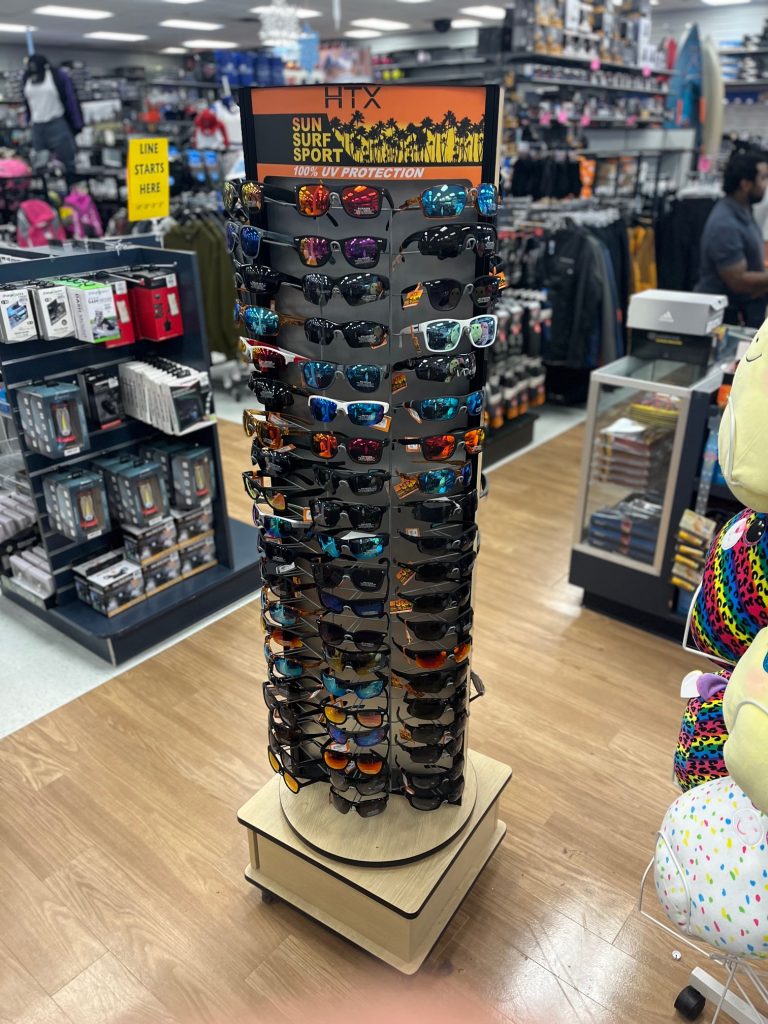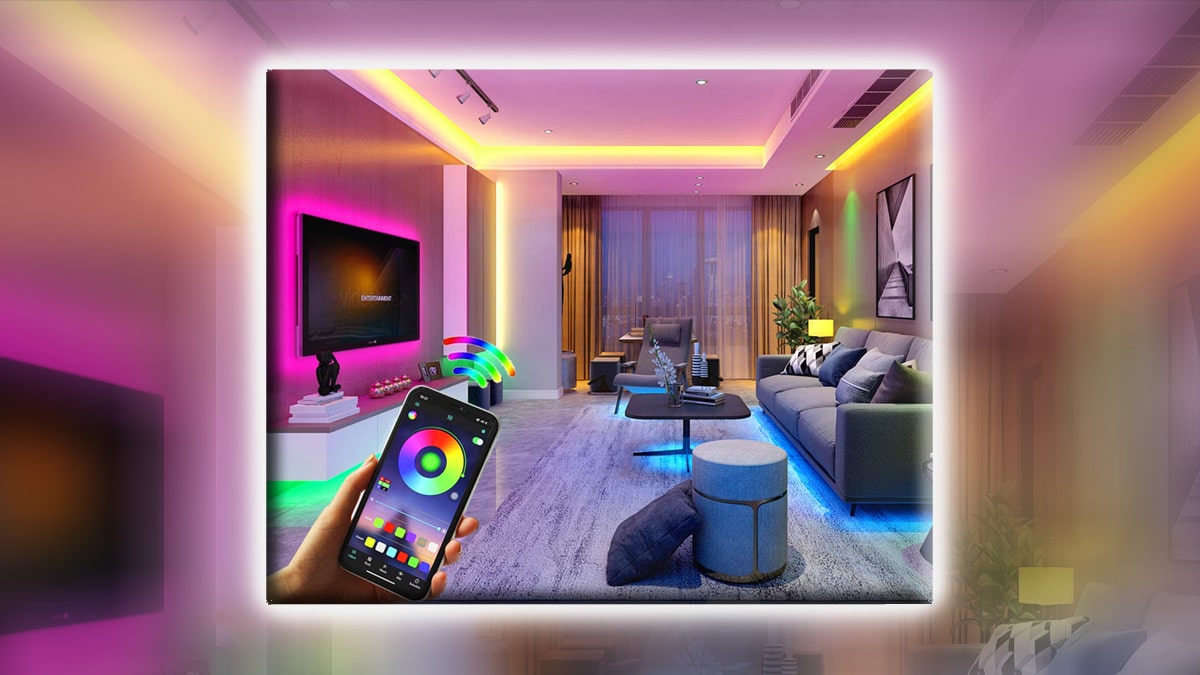Creating the Right Sunglasses Holder Display for Your Market


Like many product categories, the sunglass market is both highly competitive, highly fragmented, and highly diverse. Most companies compete by carving out a niche and focusing their resources on building a brand identity within that niche. Broadly speaking, the sunglass market can be divided into low-end/economy, mid-range, and high-end/luxury. Creating an effective retail merchandising program requires matching the sunglass display design and level of investment to the taste and expectations of your target market. In today’s post, we’ll focus on creating a sunglasses display holder for the middle market since it is the largest part of the market.
There are a few important design principles when it comes to middle market sunglasses holder displays:
● Carrying Capacity. First, the glasses display holder needs to have adequate carrying capacity and be able to handle a wide range of SKUs. Most floor displays in this category can accommodate a minimum of 72 glasses and as many as 144 or 12 dozen in sunglass-speak. Counts of 96 and 120 are also popular. The reason SKU capacity is important is the middle market is so large and tastes are so diverse that it makes sense to offer a broad range of styles to appeal to as many customers as possible. We made the 120-count display below for a chain-wide roll-out in Big 5 Sporting Goods. The program also included a 72-count display which is also pictured below.


● Flexibility. Second, the display needs to be flexible enough to be able to accommodate new styles over a multi-season program. Amortizing the cost of the sunglass display over multiple seasons is important to achieving an attractive return on investment on the display program. Since sunglasses are a fashion accessory item, the market requires new styles that are consistent with continuously changing fashion trends. So ensuring that the display will be able to accommodate big lenses, small lenses, and medium-size lenses is an important design element in the quest for fixture longevity.

● Creating Perceived Value. Third, as with some other fashion product categories, the POP display plays an integral role in creating perceived product value. The implication is that there is likely to be a payoff from investing a little more in your sunglass display. For example, if you put a $5 pair of sunglasses on a high-end display, consumers will automatically conclude that the glasses are nicer and more expensive than they really are. Conversely, it you take a $250 pair of sunglasses and put them on a corrugated display, shoppers will think they are cheap. Therefore, investing in nicer materials such as acrylic instead of PVC, adding natural wood accents, or incorporating lighting may make sense as a way to upgrade your display.

Aside from these design principles, other important design principles include: keeping the footprint small to maximize your chances for retail placement and drive the highest ROI per square foot for the retailer, ensuring signs are interchangeable to accommodate changes in branding or promotional programs, making the display a spinner to create a higher level of consumer engagement while increasing placement versatility within a store, making the glasses accessible so shoppers can easily try them on without the assistance of store personnel, incorporating mirrors to enhance the shopper experience, adding wheels for mobility, and adding a storage drawer or compartment to facilitate overstock convenience. All of these design principles are illustrated below in a photo of the same display with signage for a different brand.

Jim Hollen is the owner and President of RICH LTD. (www.richltd.com), a 35+ year-old California-based point-of-purchase display, retail store fixture, and merchandising solutions firm which has been named among the Top 50 U.S. POP display companies for 9 consecutive years. A former management consultant with McKinsey & Co. and graduate of Stanford Business School, Jim has served more than 3000 brands and retailers over more than 20 years and has authored nearly 500 blogs and e-Books on a wide range of topics related to POP displays, store fixtures, and retail merchandising.
Jim has been to China more than 50 times and has worked directly with more than 30 factories in Asia across a broad range of material categories, including metal, wood, acrylic, injection molded and vacuum formed plastic, corrugated, glass, LED lighting, digital media player, and more. He also oversees RICH LTD.’s domestic manufacturing operation and has experience manufacturing, sourcing, and importing from numerous Asian countries as well as Vietnam and Mexico.
His experience working with brands and retailers spans more than 25 industries such as food and beverage, apparel, consumer electronics, cosmetics/beauty, sporting goods, automotive, pet, gifts and souvenirs, toys, wine and spirits, home improvement, jewelry, eyewear, footwear, consumer products, mass market retail, specialty retail, convenience stores, and numerous other product/retailer categories.








